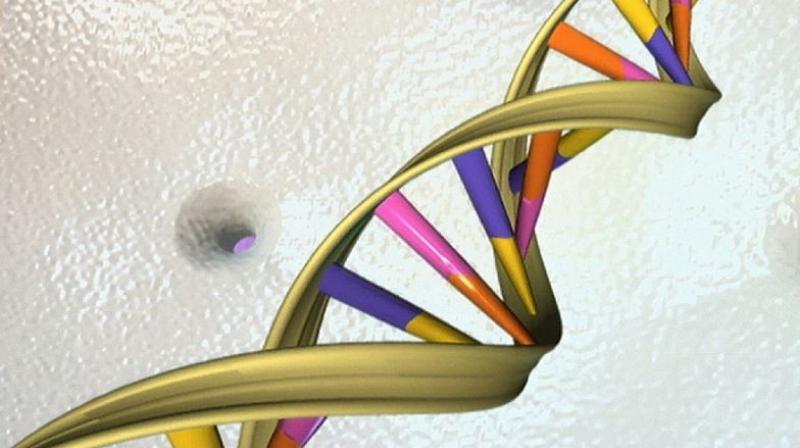Lethal diseases can be treated before birth thanks to gene editing

Washington: In a first, scientists have performed prenatal gene editing to prevent a lethal metabolic disorder in animals, offering the potential to treat human congenital diseases before birth.
Using both CRISPR-Cas9 and base editor 3 (BE3) gene-editing tools, researchers from University of Pennsylvania and Children's Hospital of Philadelphia (CHOP) in the US reduced cholesterol levels in healthy mice treated in utero by targeting a gene that regulates those levels.
They also used prenatal gene editing to improve liver function and prevent neonatal death in a subgroup of mice that had been engineered with a mutation causing the lethal liver disease hereditary tyrosinemia type 1 (HT1).
HT1 in humans usually appears during infancy, and it is often treatable with a medicine called nitisinone and a strict diet. However, when treatments fail, patients are at risk of liver failure or liver cancer.
Prenatal treatment could open a door to disease prevention, for HT1 and potentially for other congenital disorders.
"Our ultimate goal is to translate the approach used in these proof-of-concept studies to treat severe diseases diagnosed early in pregnancy," said William H Peranteau, a pediatric and foetal surgeon in CHOP's Center for Fetal Diagnosis and Treatment.
"We hope to broaden this strategy to intervene prenatally in congenital diseases that currently have no effective treatment for most patients, and result in death or severe complications in infants," said Peranteau.
"We used base editing to turn off the effects of a disease-causing genetic mutation," said Kiran Musunuru, an associate professor at University of Pennsylvania.
"We also plan to use the same base-editing technique not just to disrupt a mutation's effects, but to directly correct the mutation," said Musunuru.
In the study, scientists used base editor 3 (BE3), which takes clustered regularly interspersed short palindromic repeats (CRISPR), joins it with a modified CRISPR-associated protein 9 to form a partially active version of the CRISPR-Cas 9 tool, and harnesses it as a homing device to carry an enzyme to a highly specific genetic location in the liver cells of foetal mice.
The enzyme chemically modified the targeted genetic sequence, changing one type of DNA base to another.
After birth, the mice in the study carried stable amounts of edited liver cells for up to three months after the prenatal treatment, with no evidence of unwanted, off-target editing at other DNA sites.
"A significant amount of work needs to be done before prenatal gene editing can be translated to the clinic, including investigations into more clinically relevant delivery mechanisms and ensuring the safety of this approach," Peranteau said.

